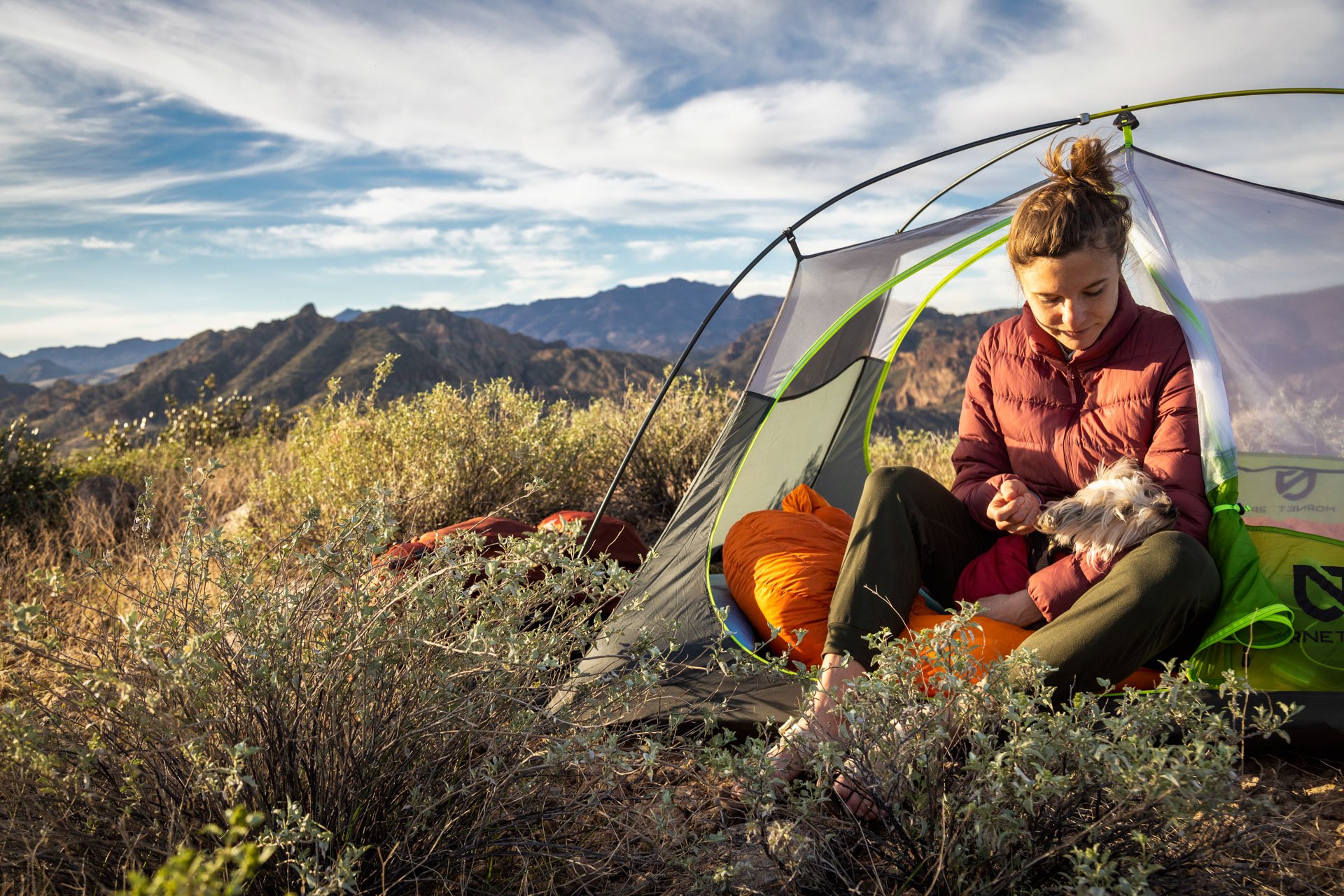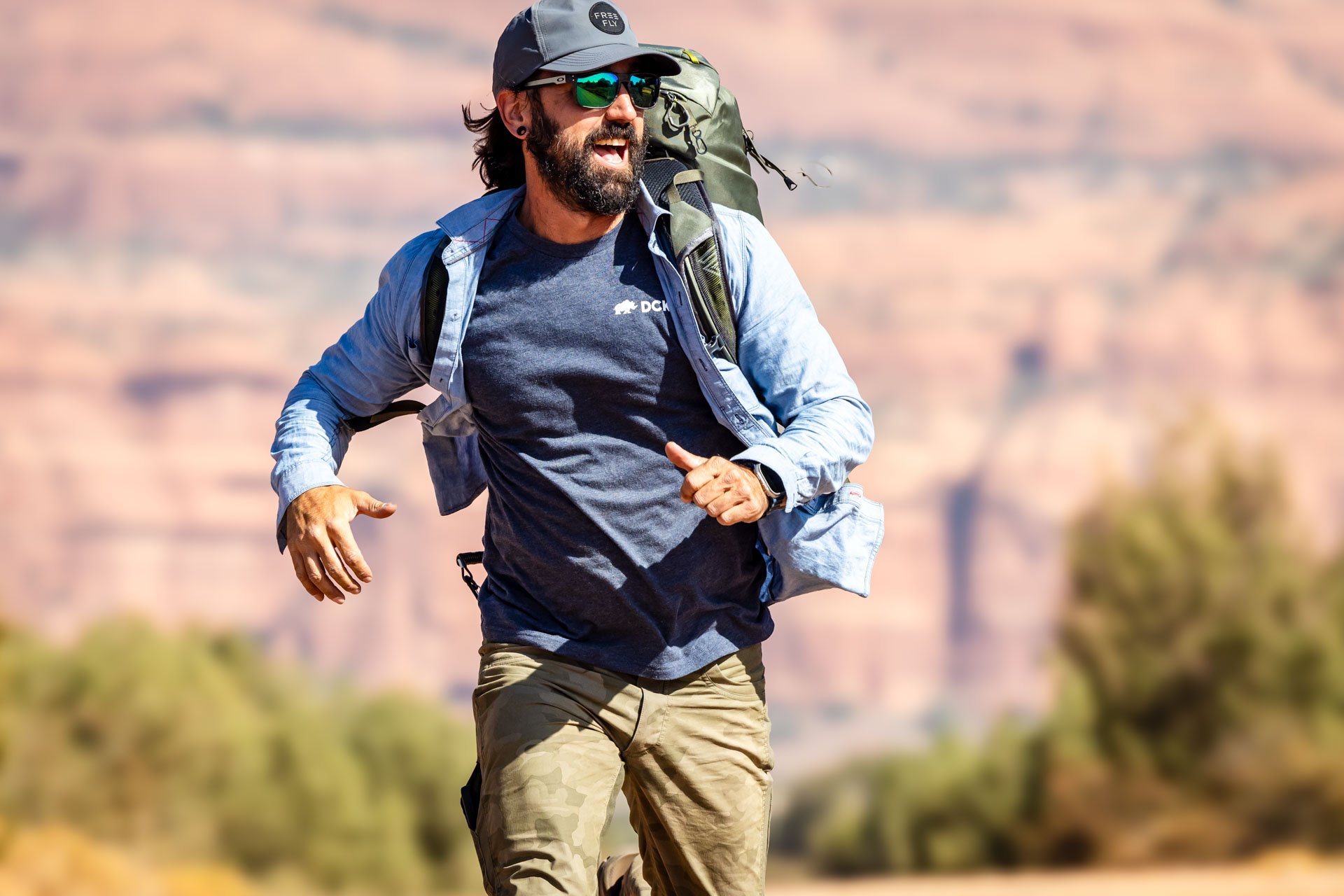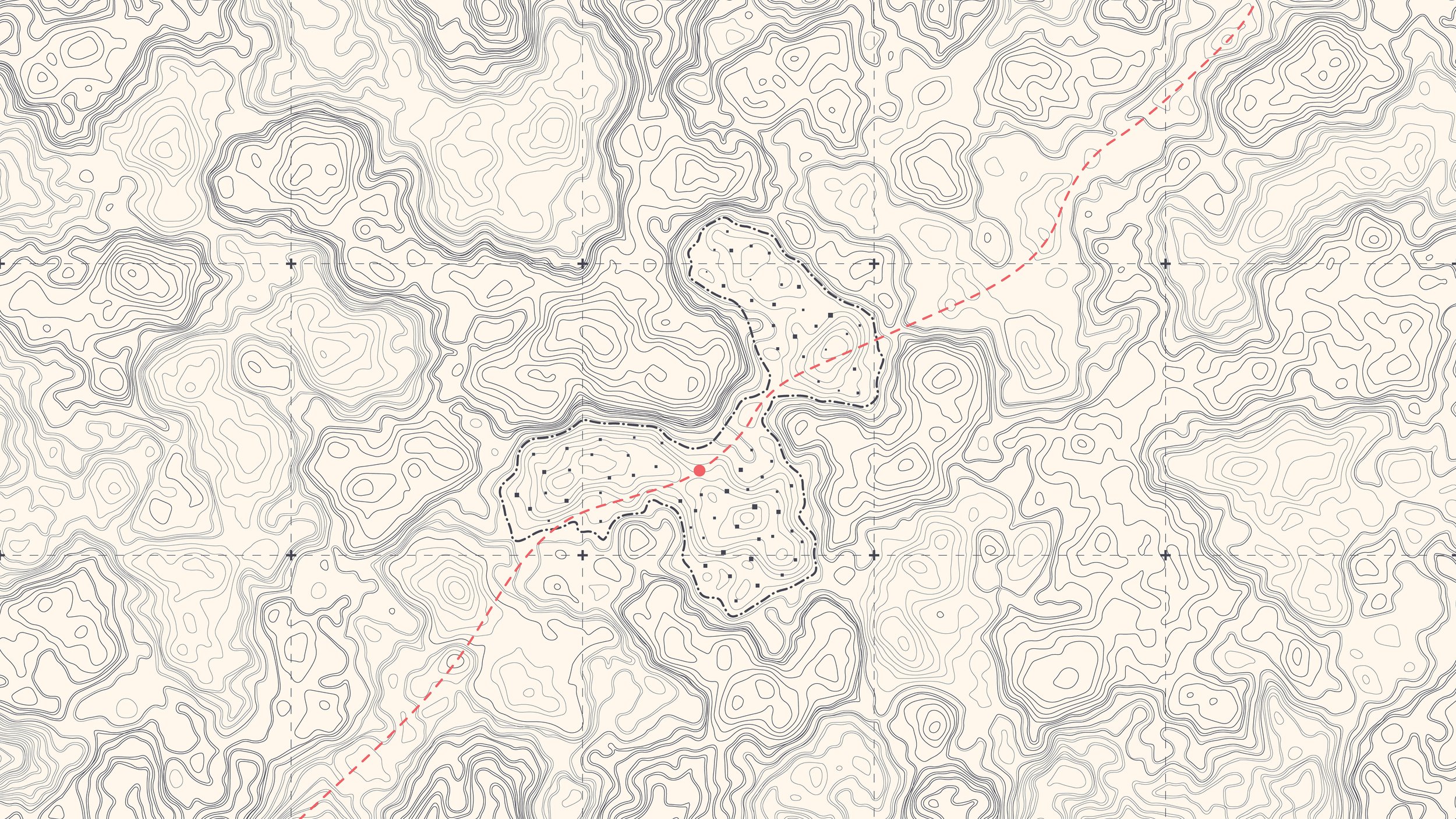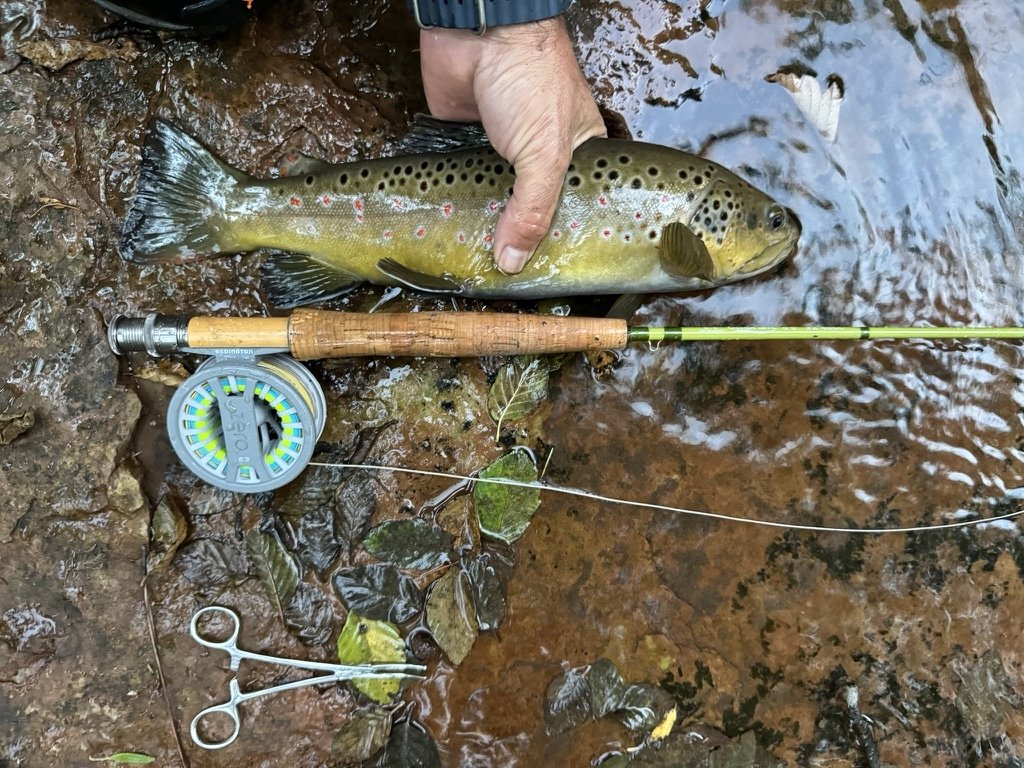the feed
The Best Packing List For Fall Backpacking
Fall may be the best time of year for backpacking. Here is a quick list of everything you need to bring on your fall backpacking trip.
Where to go, what to wear, what to eat, and what to drink.
One of our favorite seasons to go backpacking is fall. There are less people, insects, and less heat. Plus, under the color-changing leaves, there is nothing more enjoyable than curling up in your sleeping bag after being exhausted from a long trip in the cooler temps, maybe around a campfire.
There are a few things to think about before you head out on the trail that are unique to fall backpacking. Hopefully, we have got it all covered in this article!

Fall Backpacking Equipment to Bring
- A sturdy tent. We love the NEMO Hornet 2p. It weighs only two pounds and still provides essential weather protection. It has been my go-to tent for the past 3 years. If you're traveling to higher altitudes, you might want to bring a 4-season tent. Prepare for frigid weather and winter-like conditions, especially at night.
- Count your tent stakes. Make sure you have them all because of the fall winds and weather. You will want your tent and fly to be securely staked; this will help to ensure that the wind doesn't drive you crazy all night. Plus, It will keep you dry, which is far more vital. Pro Tip: In the fall, it's even more crucial to set up your tent as soon as you arrive at the campsite (i.e., before it gets dark), and make sure to dry it out as soon as you come home (since you don't want to leave a damp tent outside to mildew for the rest of the winter). Pick up some extra tent stakes - trust me, you will eventually thank us!
- A reliable headlight. The Petzl Swift is our top choice. For nighttime use in camp, choose a headlamp with an adjustable beam, regulated output (so it doesn't decrease as batteries drain), and a red-light option. Be sure to take rechargeable headlights into consideration when you weigh your selections. Remember that the days are growing shorter, so know when the sun will set so you may have plenty of time to prepare your camp.
- Extra batteries. The longer nights require more time spent using your headlamp. Additionally, the cold drains batteries quicker so it's important to have some backups. Consider grabbing some Goal Zero AAAs which can be recharged.
- A Cozy Sleeping Pad. Keep your body heat from being sucked out by the chilly earth. Before you go, check the R-value of your pad. On a scale of 1.0 to 9.5, the greater the number, the better you can anticipate it to insulate you from cold surfaces (R3 and above is best for the fall). We love the NEMO Tensor because it combines thermal insulation with extremely light fabrics. Some people like to double up on their sleeping pads by using something like the Therm-a-Rest Z Lite Sol. This will keep you even more protected from the ground. Bonus: it functions as a seat pad.
- A warm, comfortable sleeping bag. As a rule of thumb, bring a bag rated 10 degrees lower than the anticipated evening low. Additionally, keep in mind that with time, your old sleeping bag may lose some of its insulation properties. A down bag should always be cleaned thoroughly and stored loosely. Need a warmer bag? The NEMO Riff 15 is a great bag to try if you're shopping for one. If not, you can add a mummy liner, pack two summer bags, or put your pad and bag inside of a bivy sack for added warmth.
- A hard-sided water bottle. Use a Nalgene filled with hot water inside of your sleeping bag at night. This will heat up the inside and keep it warm all night. Be careful to fully tighten the lid.
- Extra Fuel. Colder temps mean longer cooking times. You'll need some extra fuel to heat up that hot water bottle for bedtime cuddling in your sleeping bag. Keep in mind that pressurized fuel canisters—or liquid gas, for that matter—cannot be shipped or transported by air, so get extra at the outdoor store closest to your destination.
- A thermos. While your Nalgene is ideal for warming up your sleeping bag because it allows heat to escape, you'll also need a container that holds that heat in. I bring my insulated Hydro Flask so I can make hot drinks and keep them warm as long as possible.
- A Bear Canister. Did you know that many animals choose to breed during the fall? Make sure to stay away from any wildlife and use bear cans, hooks, or lockers to prevent drawing them to your campsite. Use a bear canister that is large enough to fit all of your food and smelly accesories like sunscreen, deodorant, toothpaste, etc.
- Sh*t That Actually Works! Have you used all of your equipment recently? Maybe. Maybe not - better check all of it out before hitting the trails. You'll be happy that your gear is in good working order before you arrive at your camping location miles away from civilization. Make sure that all the zippers function and that the tent fly is free of rips, etc.

What To Wear When Fall Backpacking
If you would like to see exactly what we wear on the mojsoryt of our backpakcing trips, head over to our 3 Day Backpacking Checklist and jump down to the Clothing section.
1. Layer Up. The secret to fall weather hiking is layering. To wick away moisture and keep you warm even when wet, base layers made of wool, fleece, or synthetic materials are required. (Remember: Cotton kills.) I always bring a raincoat, beanie, lightweight insulated jacket, sleep socks, additional socks, and long underwear made of wool. For fall, I add gloves, an additional fleece layer, and perhaps rain trousers. Bring layers of clothes to stay warm in a variety of weather conditions, including wind, rain, and sun.
- A Good Rain Jacket. Although fall weather might be unpredictable, rain is virtually always a given in many locations. Don't undervalue the potential of your rain jacket to maintain warmth as an additional layer in camp. Raincoats do more than just keep you dry. The Arc'teryx Beta AR is bombproof, lightweight and super packable. Yes, it is expensive, but it is aboslutely worth every penny. This is one piece of gear that I highly recommend to invest in. It will last you many, many years with proper care.
- Gaiters. The fall weather can vary greatly. The trail and vegetation may get wet after an overnight or morning rain, but since it's still nice and warm, you may not want to wear pants. I frequently wear shorts with gaiters since they keep my feet and boots dry.
- Down booties. Down booties are the go-to item for avid cold-weather backpackers, whether it's for keeping warm by the campfire or adding more warmth to your sleeping bag. Warm feet are happy feet and don't add much extra weight to your pack.
- Colorful Clothes. If you're backpacking through places where hunting is active, check your local hunting regulations for the dates of the season. Same rules apply for your dog - high-visibility means safe trails.
- Clothes that dry quickly. Quick-drying gear is a necessary even if there is a remote chance that you will become wet (which there always is). Before going to bed, hang any damp (but not drenched) items in your tent. Your clothes will dry overnight so you can start the day off nice and fresh!

What to Eat and Drink
- Simple meals. Keep it simple. You'll be glad if all you have to do is boil water and enjoy! We love boil-and-go prepared foods, such as Wild Zora or Mountain House. Vary it up every night so you have something to look forward to.
- Bring Some Apps. Consider bringing an appetizer with you to camp to keep yourself full before or while you're cooking supper. A simple favorite - homemade bars of granola.
- Oh, Sweet Dessert. Treat Yo'self!! S'mores are our go-to, but any fatty food can keep you warm as your body digests it.
- Extra food. Keeping warm when simply sitting still burns calories, so bring extra food. Good fats, including those in fish, almonds, and avocados, help to maintain a healthy internal temperature.
- Hot drinks. Your body needs fluids to control your core temperature, so stay hydrated with some hot drinks like hot cocoa, coffee or tea. Did you know that the fall is the time of year when dehydration is more prone to happen since there is less sweating and thirst? I mix my own chocolate using protein, cocoa, and coconut powder. Irish cream, peppermint schnapps, or chile peppers can be added to make Mexican-style cocoa.
- Plenty of water. Water is necessary, but it might not always be easy to find as it is in other seasons. Water sources may run dry by the end of the summer, depending on your location. Make sure you are aware of your available water sources. Bring along some electrolytes such as Ultima to get some yummy flavors and vitamins while you stay hydrated!

Where to Go Fall Backpacking
- An area with good weather. The weather starts to become less predictable in the fall. Always check the forecast before heading out, but keep in mind that circumstances can change at any time.
- Where parks are open. Make sure the roads and campgrounds are open before you go. Many parks, highways, and campgrounds close from fall until spring.
- An area where the colors are popping. Fall is the best season to look for colorful leaves. Seek out the best destinations with fall colors.
- A Safe area for camping. Choose a tent location that will protect you from the weather. Avoid low-lying regions and bodies of water because they tend to be cooler. If wind is an issue, position your tent close to stones, trees, even tall brush or grass to block it. Find a spot where the light will shine on you first thing in the morning, and stay in camp to really appreciate it.
DOWNLOAD OUR 3-DAY BACKPACKING CHECKLIST
We put together the ultimate guide to help you make sure you have everything you need for your next fall backpacking trip. Since you are probably heading out in the Fall, you may want to add some additional layers on there. Print it out, and mark it off as you go!

OUTDOOR
ADVENTURE
Featured Posts
HIKING
|
FLY FISHING
|
CAMPING
|
BACKPACKING
|
GEAR REVIEWS
|
HIKING | FLY FISHING | CAMPING | BACKPACKING | GEAR REVIEWS |

Best of
Top Clothing Brands of 2023
Discover unbeatable deals on Patagonia winter essentials at the REI Outlet sale! Get up to 40% off on jackets, parkas, and more.

Subscribe to Our Newsletter
Sign up with your email address to receive news and updates.
Get in touch.
Just like in a hardcore round of intense pickleball, communication is key! Reach out with any questions, comments, beer recommendations, inquiries, critiques and jokes.




A well-equipped car camping kitchen setup makes outdoor cooking effortless. Here’s my essential gear list—powered coolers, Jetboil stoves, storage solutions, and more—to help you cook like a pro on the road.